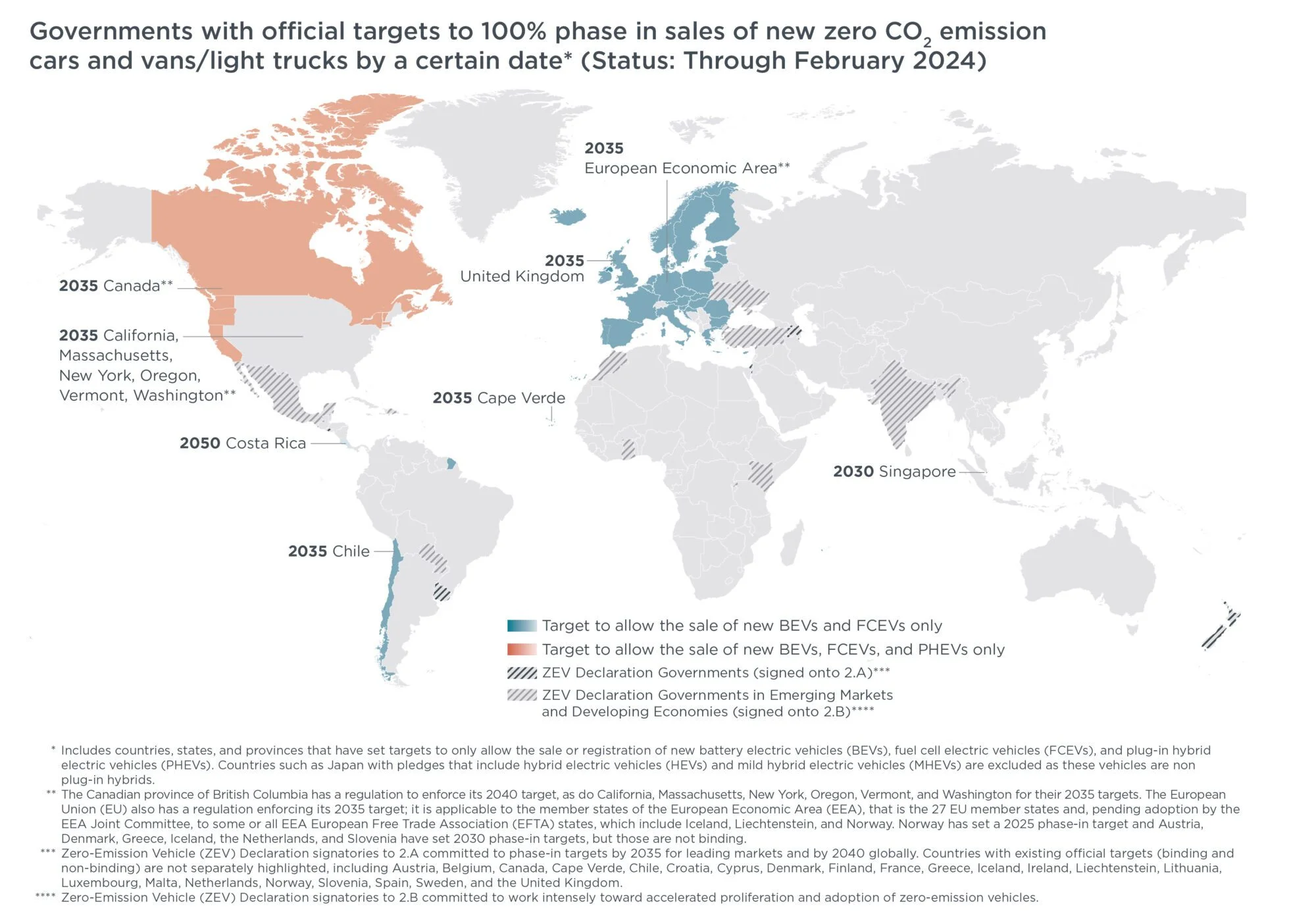In our recent article, “Will America’s Clean Car Policies Persist?” for the Kleinman Center for Energy Policy, my co-author and I looked at the ambitious path the United States is taking towards a zero-emission automotive future. We highlighted how the nation’s four cornerstone clean car policies – EPA regulations, California’s Advanced Clean Cars II, and federal tax credits – are accelarating the shift towards electric vehicles (EVs). However, during my research, it became clear that such policies will likley face a range of challenges, from legal, to political and economic.
While the article primarily focuses on U.S. policies under the Biden Administration, it’s essential to consider the global context. Many countries are also aggressively pursuing clean car policies. The European Union, for instance, has set a target of reducing CO2 emissions from new cars and vans by 55% by 2030 compared to 2021 levels. China, the world’s largest auto market, has invested heavily in EV technology and infrastructure, with over 13 million electric vehicles on the road in 2022. This represents approximately 15% of the global EV market.
A comparative analysis reveals both commonalities and divergences in these global efforts. Most countries recognize the need of transitioning to cleaner transportation to mitigate climate change and improve air quality. However, it became clear to me that the pace and intensity of these policies vary widely. Factors like economic conditions, energy resources, and political landscape play a big role in approach taken by different nations. Here’s a graph that summarizes this difference for cars and light-duty trucks (credit to Coltura)

Circling back to the U.S., the legal and political battles over clean car policies are far from over. The fossil fuel industry, representing a $1.3 trillion sector, is aggressively challenging these policies in court, with over 30 lawsuits filed against the EPA’s clean car standards since 2021. The outcome of these legal challenges and the 2024 presidential election will significantly impact the trajectory of the U.S. clean car agenda.
Furthermore, the Inflation Reduction Act’s tax credits, while aiming to bolster domestic EV production, have introduced new complexities. The $369 billion allocated for clean energy initiatives, including EV tax credits, has generated both praise and criticism. Concerns about the policy’s protectionist nature and potential to distort global supply chains have been raised.
Despite these challenges, the overall trend towards electrification is undeniable. Automakers, collectively investing billions of dollars in EV research and development, are racing to meet growing consumer demand. For instance, Tesla alone has captured around 20% of the global electric passenger car market. However, a successful transition to a clean car future requires a coordinated effort involving governments, industry, and consumers.
To accelerate EV adoption, several key areas require attention. Expanding the charging network is crucial to alleviate range anxiety, as the current 130,000 public charging stations in the U.S. are insufficient. Additionally, lowering EV costs through incentives and technological advancements is essential to broaden accessibility, as current prices often exceed those of gasoline-powered vehicles. Breakthroughs in battery technology are needed to enhance performance, reduce costs, and increase sustainability. Finally, grid integration is vital to accommodate increased EV charging demand, requiring investments in infrastructure and smart charging solutions.
The future of clean car policies is uncertain, but the potential benefits are immense. By overcoming the challenges and seizing the opportunities, the United States and other countries can pave the way for a cleaner, healthier, and more sustainable transportation sector.